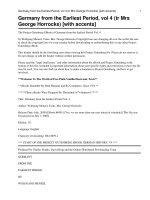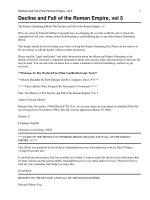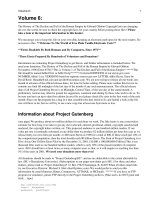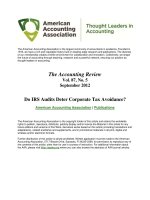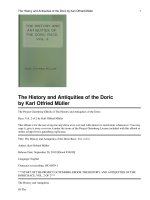agathe keller - expounding the mathematical seed vol 2
Bạn đang xem bản rút gọn của tài liệu. Xem và tải ngay bản đầy đủ của tài liệu tại đây (1.4 MB, 279 trang )
Science Networks
·
Historical Studies
Founded by Erwin Hiebert and Hans Wußing
Volume 31
Edited by Eberhard Knobloch and Erhard Scholz
Editorial Board:
K. Andersen, Aarhus
D. Buchwald, Pasadena
H.J.M. Bos, Utrecht
U. Bottazzini, Roma
J.Z. Buchwald, Cambridge, Mass.
K. Chemla, Paris
S.S. Demidov, Moskva
E.A. Fellmann, Basel
M. Folkerts, München
P. Galison, Cambridge, Mass.
I. Grattan-Guinness, London
J. Gray, Milton Keynes
R. Halleux, Liège
S. Hildebrandt, Bonn
Ch. Meinel, Regensburg
J. Peiffer, Paris
W. Purkert, Leipzig
D. Rowe, Mainz
A.I. Sabra, Cambridge, Mass.
Ch. Sasaki, Tokyo
R.H. Stuewer, Minneapolis
H. Wußing, Leipzig
V.P. Vizgin, Moskva
Agathe Keller
Expounding the
Mathematical Seed
Volume 2: The Supplements
A Translation of Bhaskara I on the Mathematical Chapter
of the Aryabhatiya
Birkhäuser Verlag
Basel · Boston · Berlin
Author
Agathe Keller
Rehseis CNRS
Centre Javelot
2 place Jussieu
75251 Paris Cedex 05
e-mail:
A CIP catalogue record for this book is available from the Library of Congress,
Washington D.C., USA
Bibliographic information published by Die Deutsche Bibliothek
Die Deutsche Bibliothek lists this publication in the Deutsche Nationalbiographie;
detailed bibliographic data is available in the internet at
ISBN 3-7643-7292-3 Birkhäuser Verlag, Basel – Boston – Berlin
This work is subject to copyright. All rights are reserved, whether the whole or
part of the material is concerned, specifi cally the rights of translation, reprinting,
re-use of illustrations, recitation, broadcasting, reproduction on microfi lms or in
other ways, and storage in data banks. For any kind of use, permission of the
copyright owner must be obtained.
© 2006 Birkhäuser Verlag, P.O.Box 133, CH-4010 Basel, Switzerland
Part of Springer Science+Business Media
Cover design: Micha Lotrovsky, CH-4106 Therwil, Switzerland
Cover illustration: The cover illustration is a free representation of
“Rat and Hawk” (made by Mukesh)
Printed on acid-free paper produced from chlorine-free pulp. TCF ∞
Printed in Germany
Vol. 1/SN 30: ISBN 10: 3-7643-7291-5 e-ISBN: 3-7643-7592-2
ISBN 13: 978-3-7643-7291-0
Vol. 2/SN 31: ISBN 10: 3-7643-7292-3 e-ISBN: 3-7643-7593-0
ISBN 13: 978-3-7643-7292-7
Set SN 30/31: ISBN 10: 3-7643-7299-0 e-ISBN: 3-7643-7594-9
ISBN 13: 978-3-7643-7299-6
9 8 7 6 5 4 3 2 1
Contents
ListofFigures ix
ListofTables xii
Howtoreadthisbook? xiii
AbbreviationsandSymbols xiii
Supplements 1
A BAB.2.3 2
A.1 Arithmetical squaring and its geometrical interpretation . . 2
A.2 Squaresandcubesofgreaternumbers 7
A.3 Squaringandcubingwithfractions 12
B BAB.2.4-5 15
B.1 Extractingsquare-roots 15
B.2 Extractingcube-roots 18
C BAB.2.6 22
C.1 Areaofatriangle 22
C.2 Volumeofapyramid 27
D BAB.2.7 31
D.1 Areaofacircle 31
D.2 Volumeofasphere 32
D.3 Procedurefollowedinexamples 34
E BAB.2.8 34
E.1 Generalrule 34
E.2 Descriptionofthefield 35
E.3 Bh¯askara’sinterpretation 36
E.4 Procedurefollowedinexamples 39
vi Contents
F BAB.2.9 40
F.1 Ab.2.9.ab 40
F.2 Ab.2.9.cd 45
G BAB.2.10 47
G.1
¯
Aryabhat
.
a’sverse 47
G.2 The “ten karan
.
¯ıs”theory 48
G.3 Steps used to refute the “ten karan
.
¯ıs”theory 52
H BAB.2.11 54
H.1 Bh¯askara’sunderstandingofAb.2.11. 54
H.2 Thestepsofthediagrammaticprocedure 58
H.3 Achordofthesamelengthasthearcitsubtends 69
I BAB.2.12 69
I.1 A sp ecific interpretation of the rule . . . . 70
I.2 Understandingtheprocedure 73
I.3 Rversedsine 75
J BAB.2.13 75
J.1 What Bh¯askarasaysofcompasses 75
J.2 Parame´svara’sdescriptionsofapairofcompasses 76
K BAB.2.14 78
K.1
¯
Aryabhat
.
a’sverse 78
K.2 Understanding Bh¯askara’sastronomicalextension 80
K.3 Differenttypesofgnomons 84
L BAB.2.15 89
L.1 Understandingtherule 89
L.2 Procedure 91
M BAB.2.16 92
M.1
¯
Aryabhat
.
a’srule 92
M.2 Astronomicalmisinterpretations 95
M.3
¯
Ujjayin¯ı, La ˙nk¯a and Sthane´svara 98
N BAB.2.17 100
N.1 The “Pythagoras Theorem” . 100
N.2 Twoarrowsandtheirhalf-chord 101
O BAB.2.18 105
Contents vii
P BAB.2.19-22 106
P.1 Ab.2.19 107
P.2 Ab.2.20:Thenumberofterms 111
P.3 Ab.2.21:Progressivesumsofnaturalnumbers 111
P.4 Ab.2.22:Sumofsquaresandcubes 113
Q BAB.2.23-24 114
Q.1 BAB.2.23: K nowing the product from the sum of the squares
andthesquareofthesum 114
Q.2 BAB.2.24: Finding two quantities knowing their difference
andproduct 115
R BAB.2.25 116
R.1 The rule given by
¯
Aryabhat
.
a 116
R.2 Procedure followed by Bh¯askarainexamples 117
R.3 VerificationwithaRuleofFive 117
S BAB.2.26-27 118
S.1 RuleofThree 118
S.2 RuleofFiveandthefollowing 123
S.3 TheReversedRuleofThree 125
T BAB.2.28 128
T.1 Notations and references . . . 128
T.2 Computing the time with the Rsine of the sun’s altitude . . 128
T.3 Whichprocedureisreversed? 129
U BAB.2.29 132
V BAB.2.30 133
V.1 Generalresolutionoffirstorderequations 133
V.2 Debtsandwealth 135
W BAB.2.31 137
W.1 Understandingtheverse 137
W.2 Bh¯askara’sdistinctionsandexplanations 137
W.3 Findingthelongitudeofthemeetingpoint 139
X BAB.2.32-33:Thepulverizer 142
X.1 Twodifferentproblems 142
X.2 Procedureforthepulverizer“withremainder” 143
X.3 Procedureofthepulverizerwithoutremainder 155
X.4 Astronomicalapplications 160
viii Contents
Appendix: Some elements of Indian astronomy 186
1 Generalities 186
2 Coordinates 187
3 Movementofplanets 191
4 Timecycles 193
5 Orbitsandnon-integralresiduesofrevolutions 194
Glossary 197
1 General 197
2 Peculiarandmetaphoricexpressions 221
3 Measureunits 222
3.1 Unitsoflength 222
3.2 Measuresofweight 223
3.3 Coins 223
3.4 Timeunits 224
3.5 Subdivisionsofacircle 224
4 Namesofplanets,constellations,zodiacsigns 224
5 Daysoftheweek 225
6 Godsandmythologicalfigures 226
7 Cardinaldirections 226
Bibliography 227
A Primarysources 227
B Secondarysources 228
Index 235
List of Figures
1Bh¯askara’sdiagram 2
2Bh¯askara’sdiagraminShukla’sedition 3
3Bh¯askara’sdiagraminamanuscript 3
4 Countingsub-surfaces 4
5 Countingstrokes 5
6Ganes
.
a’s ‘proof’ of the ‘Pythagoras Theorem’ . . 6
7 Equilateralandisocelestriangles 23
8 Anytriangle 25
9 Anequilateralpyramidwithatriangularbase 27
10 A
´
Sr
.
˙ngataka . 28
11 RuleofThree 30
12 Anisocelestrapezium 34
13 Fieldsinsideatrapezium 38
14 Arectangleandanequilateraltriangle 41
15 Onerectangleandanytriangle 42
16 Tworectanglesandanytriangle 43
17 Drumfield 44
18 Tuskfield 45
19 Chordinacircle 46
20 Fieldsinsideacircle 47
21 Circleandbowfields 50
22 Circleandarrow 50
23 Chedkyaka 55
24 Trilateralsandquadrilaterals 55
x List of Figures
25 Abow-fieldoftwounit-arcs 56
26 Aquadrantwithhalf-chords 60
27 A quadrant subdivided in half r¯a´sis 62
28 Right-angledtrianglesinacircle 63
29 DerivationofHalf-chords(1) 67
30 DerivationofHalf-chords(2) 68
31 Sectionofachord 71
32 Compasses 79
33 Semi-diameterofone’sshadow 80
34 Astronomical interpretation of a gnomon . 81
35 GnomonandCelestialsphere 82
36 Equinoctialdaygnomon 84
37 Modelofagnomon(1) 86
38 Modelofagnomon(2) 87
39 Modelofagnomon(3) 90
40 Aschematizedgnomonandalight 91
41 Asourceoflightwithtwognomons 93
42 Theshadowoftheearth 96
43 Sphericityoftheearth 98
44 Aright-angledtrianglewithanadditionalhalf-side? 101
45 Atrianglewiththeotherhalfofthechord 101
46 Arrowsinacircle 102
47 Hawks and Rats, Broken Bamboos and Sinking Lotuses 103
48 FishandCranes 104
49 Twointersectingcircles 105
50 “Thesolidmadeofapile” 113
51 Piles 115
52 Trueandmeanpositionsofaplanet 126
53 Oppositemotions(1) 140
54 Oppositemotions(2) 141
55 Samemotions 142
56 TheCelestialsphere 187
List of Figures xi
57 Coordinates 188
58 Apparentmotionofthesuninayear 189
59 Dailyandyearlyapparentmotionsofthesun 190
60 Dailymotionofthesun 190
61 Thesunonanequinoctialday 191
62 Orbitofaplanet 192
63 Abow-field 198
64 Atusk-field 200
65 Right-angled triangle in a ´sr
.
˙ng¯ata field. 201
66 Right-angledtriangle 202
67 ThediagraminBAB.2.11 206
68 Chordandhalf-chord 207
69 Thedifferenceoftwohalf-chords 208
70 Anisocelestrapezium 212
71 Residueofrevolutionsandresidueofsigns 213
List of Tables
1 Squaring: a heuristic presentation . 9
2 Cubing63 12
3 Cubingafraction 15
4 Extractingasquare-root 18
5 Extractingthecube-root 22
6
¯
Aryabhat
.
aandBh¯askaragivenames 37
7 R¯a´sis,unit-arcsanddegrees 59
8 Approximations 65
9 DerivationofHalf-chords 66
10 Areversedastronomicalprocedure 132
11 The different subdivisions of a revolution 194
12 Unitsoflength 223
13 Unitsofweight 223
14 Divisionsoftheday 224
How to read t h is book?
This volume contains the supplements for the translation presented in the first
volume. The supplements aren’t made to be read alone.
Indeed, Volume I contains an English translation of a VIIth Century Sanskrit
commentary written by an astronomer called Bh¯askara, and an extensive Intro-
duction to the text. Because Bh¯askara’s text alone is difficult to understand, I
have added for each verse commentary a supplement which discusses the linguis-
tic and mathematical matter exposed by the commentator. These supplements are
gathered in the present volume (Volume II), which also contains glossaries and the
bibliography. The two volumes should be read simultaneously.
Abbreviations and Symbols
When referring to parts of the treatise, the
¯
Aryabhat
.
¯ıya,wewillusetheabbrevi-
ation: ‘Ab’. A first number will indicate the chapter referred to, and a second the
verse number; the letters ‘abcd’ refer to each quarter of the verse. For example,
‘Ab. 2. 6. cd’ means the two last quarters of verse 6 in the second chapter of the
¯
Aryabhat
.
¯ıya.
With the same numbering system, BAB refers to Bh¯askara’s commentary. Mbh
and Lbh, refer respectively to the M¯ahabh¯askar¯ıya and the Laghubh¯askar¯ıya,two
treatise written by the commentator, Bh¯askara.
[] refer to the editor’s additions;
indicates the translator’s addition;
() provide elements given for the sake of clarity. This includes the transliteration
of Sanskrit words.
Supplements
ThefirstpartofBh¯askara’s commentary on the mathemathematical chapter of
the
¯
Aryabhat
.
¯ıya ( e.g. his introduction to the chapter and the two first verse com-
mentaries) has not been given any supplements. However, explanatory footnotes
with references to secondary literature have been provided with the translations.
2 Supplements
A BAB.2.3
A.1 Arithmetical squaring and its geometrical interpretation
In answer to an ambiguous objection
1
:
¯ayatacatura´sraks
.
etr¯adis
.
u vargakarman
.
o’stitv¯at tes
.
¯am
asamacatura´sr¯an
.
¯am api vargasam
.
j˜n¯aprasa ˙ngah
.
|
Objection Because a square operation exists in rectangular fields, and
so on, there is the possibility for the name ‘square’ to be given to fields
which are not equi-quadrilaterals also.
Bh¯askara prescribes the construction of a square made by the diagonals of four
rectangles
2
. This diagram, as seen in Figure 1, supposedly “shows” that the arith-
metical squaring of the length of a diagonal corresponds to the area of a square.
Figure 1: Bh¯askara’s diagram
Several difficulties arise concerning this objection and the following paragraph.
First of all, the objection concerns the action of naming “square” (varga)fields
that wouldn’t even be equilateral quadrilaterals. Bh¯askara does not answer directly
on this point
3
.
Secondly,anexpressionusedbyBh¯askara when describing the construction of this
field remains op e n to several interpretations. The description starts in this way
4
:
samacatura´sraks
.
etram ¯alikhya as
.
t
.
adh¯a vibhajya . . .
When one has sketched an equi-quadrilateral field and divided it in
eight . . .
1
[Shukla 1976; p. 48, lines 9-10]
2
[Shukla 1976; p. 48, lines10-16]
3
We can notice, however, that even if he states before that the object samacatura´sra (equi-
quadrilateral) has the name varga (square), he in fact never uses the latter for a geometrical
object. A varga in his commentary is always the result of the arithmetical operation of squaring.
4
[Shukla 1976; p. 48, line 10]
A. BAB.2.3 3
The question is then: how should one understand the expression
“as
.
/dtadh¯a vibhajya”?
Implicitly, as can be seen in Figure 2, the editor considers that the square con-
structed has sides that measure 8.
Figure 2: Bh¯askara’s diagram in Shukla’s edition
The understanding of the expression as
.
t
.
adh¯a vibhajya (cut into eight) would then
be that the rectangles are drawn by cutting into the s id es of the squares. However
the diagram that can be seen in our photographic copy of mss D, do es not show
such a square. This may be seen in Figure 3.
Figure 3: Bh¯askara’s diagram in a manuscript
Another understanding of the expression could be to count the sub-surfaces, cut
into the square whose sides measure 7, by the four rectangles and their diagonals.
This is illustrated in Figure 4.
4 Supplements
Figure 4: Counting sub-surfaces
1
2
3
4
5
7
8
6
Indeed these cuts draw eight right-angle triangles. The square in the middle would
be left out because it is not considered in Bh¯askara’s reasoning. However, because
one needs to omit the innermost square, this interpretation remains unsatisfactory.
Finally, one can consider that once the square whose sides measure 7 is constructed,
the four rectangles and their diagonals are drawn in eight strokes. These strokes
are illustrated in Figure 5.
None of these alternative interpretations prevents the expression from remaining
quite enigmatic.
Returning to the problems occurring in the paragraph at stake we can note that
the meaning of the objection remains ambiguous. We do not know what is a
‘vargakarman’ (square-ope ration ): Is it the numerical squaring of any length?
Certainly, Bh¯askara’s goal is to d iscuss the geometrical meaning of the squaring of
a length, as when previously he discussed the nature of the karan
.
¯ı operation
5
.We
believe that the expression vargakarman used in the objection does not concern
the squaring of any length, but only that of a diagonal or hypotenuse (karn
.
a).
Neither the questioner nor Bh¯askara mentions the fact that this could be true for
any length.
Indeed, it is surprising that his answer to the objection does not concern the
arithmetical square of the side of any geometrical figure. His first reply runs as
follows:
5
See the introduction to the gan
.
itap¯ada.
A. BAB.2.3 5
Figure 5: Counting strokes
1
2
3
4
5
7
8
6
nais
.
a dos
.
ah
.
| tes
.
v api yo vargah
.
sa samacatura´sraks
.
etraphalam|
This is not wrong. In these fields too, a square is the area of an equi-
quadrilateral field.
The demonstrative (tes
.
u) refers to a list of fields given in the objection (rectangles,
etc.). Bh¯askara’s drawing illustrates th e squaring of the diagonals of a rectangle.
He adds, referring certainly to a right-angle triangle:
tribhuje ’py etad eva dar´sanam, ardh¯ayatacatura´sratv¯at tribhujasya|
Just this exposition (dar´sana) exists in a trilateral (tribhuja)also,
because a trilateral is half a rectangle.
Even though this discussion does not concern directly the “Pythagoras Theorem”
6
it is closely related to it.
Let us look at Figure 1 page 2 again. The area of the square in the middle can be
seen as the square of the diagonal of the rectangle (c
2
). But we can also consider
the area of the first drawn square. This is equal to the square of the sum of the two
adjoining sides of the rectangle ((a + b)
2
). Now if we cut off the areas of the four
triangles that corner this big square, we obtain once again the area of the square
in the middle. The area of each triangle is half the area of one rectangle (4 ×
ab
2
)
“because a trilateral is half a rectangle”. So we th en see that c
2
=(a +b)
2
−2 ×ab.
6
Quotation marks are used to indicate that the name is a convention with a story to it, and
that we do not consider that Pythagoras is the real discoverer of this property of right-triangles.
6 Supplements
From which the formulation of the “Pythagoras Theorem” (stated in Ab.2.17.ab),
algebraically c
2
= a
2
+ b
2
, may be deduced.
Even though Bh¯askara does not elaborate this reasoning, it is noteworthy that
the diagram he describes can be used in a geometrical demonstration of the
“Pythagoras Theorem”.
Figure 6: Ganes
.
a’s ‘proof’ of the ‘Pythagor as Theorem’
One can note that the “Pythagoras Theorem” was known and used by the au-
thors of the ´sulba-s¯utras, who considered it always in a rectangle. Ab.2.17.ab. as
interpreted by Bh¯askara, on the other hand, is almost systematically used in ref-
erence to a right-angle triangle. Concerning such a type of field before the time of
Bh¯askara, Datta & Singh are of the opinion that it was known by
¯
Apastamba who
used it in a proof of the “Pythagoras Theorem”
7
. However, no such field appears
in any of these two authors’ works. Its existence is deduced by Datta & Singh
through the fact that its properties are used by
¯
Apastamba and Baudhy¯ana, in
the procedure for enlarging squares.
A similar type of field is known to have been presented for proofs or verifications
of the “Pythagoras Theorem” after the time of Bh¯askara I, by Bh¯askara II
8
and
by some of his commentators (namely Gan
.
es
.
a)
9
. But only the trian gul ar part is
considered with different lengths. This is illustrated in Figure 6.
In this diagram, the area of the interior small square whose sides are equal to b−a
(so the area is (b − a)
2
) is increased by the area of th e four triangles whose sides
are a and b (the area of each triangle is therefore
ab
2
). This gives the area of the
big square whose sides are the hypotenuse of the four triangles (in other words:
c
2
=(a −b)
2
+4(
ab
2
)=a
2
+ b
2
). This last reasoning uses also the fact, mentioned
by Bh¯askara I, that ‘a trilateral is half a rectangle’.
7
[Datta&Singh 1980; p.134-135]
8
[Jain 1995; p.57]
9
[Srinivas 1990;p.39]
A. BAB.2.3 7
A.2 Squares and cubes of greater numb e rs
A.2.1 Squaring
Bh¯askara quotes a rule ( includ ed in Shukla’s list of quotations from other works
[Shukla 1976; Appendix V, p.347]) to square numbers with more than one digit.
antyapadasya ca vargam
.
kr
.
tv¯a dvigun
.
am
.
tad eva c¯antyapadam|
´ses
.
apadair ¯ahany¯ad uts¯aryots¯arya vargavidhau
When one has made the square of the last term, one should multiply
twicethatverylastterm|
separately by the remaining terms, shifting again and again, in the
operation for squares
The procedure is elliptic for we do not know how it was carried out practically.
How were the successive computations set down? Where did the final square ap-
pear? And some expressions are ambiguous. Indeed, the statement ‘shifting again
and again’ (uts¯arya uts¯arya) can have a double meaning. It may refer to the suc-
cessive multiplications of the doubled last term with the following digits, or to
the repetition of the process itself, considering one after the other the digits of
the number to be squared. Even though we have considered, in the reconstruction
of the procedure reflected in Table 1, that the shifting refers to the iteration of
the process itself, it most probably should be understood as explaining both the
iteration of the process and the iteration of the shifting.
If the ambiguity and ellipticity make the verse difficult to read, one should not
neglect the simplicity of the algorithm stated in such a way. Its core is pointed
out; it is a succession of squarings and doublings.
This is how, step by step, we reconstruct the squaring process (for a.10
2
+b.10+c):
Step 1 Squaring the last digit (a
2
.10
4
);
Step 2 Computing the successive products of 2 times the last digit with the re-
maining digits (2ab.10
3
and 2ac.10
2
);
Step 3 Adding the successive prod ucts, according to their respective powers of 10
to the partial square (a
2
.10
4
+2ab.10
3
+2ac.10
2
);
Step 4 Erasing the last digit, and “shifting”. Then starting the process again, until
no more digits of the initial number are left. (Reiterating the process with
the number b.10 + c,thenc, considering each time the partial square found
in Step 3).
This hypothetical construction is illustrated in Table 1. Comparing it with other
processes known in Sanskrit mathematical literatu re would have enabled us to
justify the way we have presented it. For instance, as the process begins by squaring
the last-term, we have inferred that this involved erasing the term that previously
entered with that label into the process.
8 Supplements
Table 1: Squaring: a heuristic presentation
Rule Example: squaring 125 Squaring a.10
2
+ b.10 + c
‘When one has
made the square
of the last term’
1
2
is the square of
the last digit. This is
how one would have set
down the number:
125
1 −−−−
a
2
.10
4
is computed
‘one shou ld mul-
tiply twice that
very last term
separately b y
the remaining
terms’
2 × 2=4and2× 5=
10. When adding these
numbers according to
their respective powers
of 10, the disposition
obtained would be:
125
15−−−
(a.10
2
)
2
+2a10
2
(b.10 + c)
‘Shifting again
and again’
Erasing the digit which
previously started the
computation:
25
15−−−
b.10 + c is now the number to
be squared
‘when one has
made the square
of the last term’
2
2
= 4 is the square of
the last term. When
adding this quantity
according to its power
of 10 to the partial
square found, the
disposition obtained
would be:
25
154−−
(a.10
2
)
2
+2a10
2
(b.10 + c)+
(b.10)
2
A. BAB.2.3 9
‘one shou ld mul-
tiply twice that
very last term
separately b y
the remaining
terms’
(2×2) ×5=20iscom-
puted. When adding
these values according
to the respective deci-
mal places, and placing
them:
25
15 4 −−
+2 0 −
15 6 0 −
(a.10
2
)
2
+2a10
2
(b.10 + c)+
(b.10)
2
+2b10.c
‘Shifting again
and again’
When erasing the
digit which previ-
ously started the
computation:
5
1560−
‘when one has
made the square
of the last term’
5
2
= 25. When adding
this value to the partial
square found according
to its power of ten, and
placing it:
5
15625
(a.10
2
)
2
+2a10
2
(b.10 + c)+
(b10)
2
+2b10.c + c
2
Theprocessendshere
as there are no more
digits. T he square ob-
tained is: 15625
(a.10
2
+ b.10 + c)
2
10 Supplements
A.2.2 Cubing
No extensive rule for cubing is given by Bh¯askara in his commentary to the latter
part of Ab.2.3. Cubing appears in the text as a natural extension of squaring. He
quotes the beginning of a verse that recalls the structure of the verse he gave for
the squaring of number s:
atr¯api yes
.
¯am
.
”antyapadasya ghanam
.
sy¯at” ity¯adi laks
.
an
.
as¯utram, tes
.
¯am
ek¯ad¯ın¯am
.
ghanasa ˙nkhy¯a vaktavy¯a
In this case also, the cube-numbers of those digits beginning with 1
aretoberecitedby those whose rule which is a characterization is
‘the cube of the last place should be, etc.’.
We can, h owever, infer the successive steps of the procedure involved, some of
which may have seemed to the practition ers part of the natural process of com-
puting (cubing a.10 + b):
Step 1 Cubing the last digit (a
3
.10
3
);
Step 2 Computing the successive products of 3 times the square of the last digit
with the remaining digits (3a
2
b.10
2
); and adding the successive products,
according to their respective powers of 10, to the partial cube (a
3
.10
3
+
3a
2
b.10
2
).
Step 3 Computing the successive products of 3 times the last digit with the squares
of the remaining digits (3ab
2
10); and adding the successive products, accord-
ing to their respective powers of 3, to the partial cube (a
3
.10
3
+3a
2
b.10
2
+
3ab
2
10).
Step 4 Erasing the last digit, and “shifting”. Then starting the process again, until
no more digits of the initial number are left. The partial cube considered being
theonefoundinStep3.
This hypothetical computation is illustrated in Table 2.
Table 2: Cubing 63
Hypothetical rule The cubing of 63 The cubing of a.10 + b
cube the last digit 6
3
= 216. The disposition
would be:
63
216−−−
(a.10)
3
A. BAB.2.3 11
Table 2: Cubing 63
Considering the suc-
cessive product of
3times the square of
the last digit with
the remaining digits
As 3 × 6
2
× 3 = 324, the
disposition would be:
63
216−−−
32 4 −−
Adding according to the
respective decimal places
of each digit:
63
2484−−
(a.10)
3
+3a
2
10
2
.b
Computing succes-
sively the product of
3 times the last digit
with the square of
the following digits
As 3 × 6 × 3
2
= 162, the
disposition would be:
63
2484−−
16 2 −
Adding according to the
respective decimal places
of each digit:
63
25002−
(a.10)
3
+3a
2
10
2
.b +
3a10.b
2
Erasing the last digit
3
25002−
Considering that the num-
ber to cube is b.

